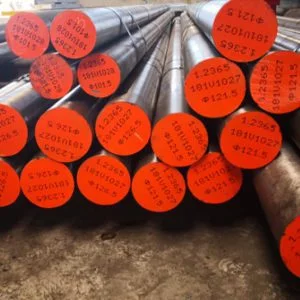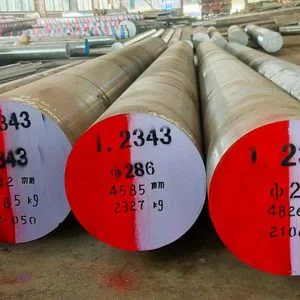Introduction

In the realm of manufacturing, the choice of materials plays a pivotal role in determining the efficiency, durability, and quality of the end product. Among these materials, hot tool steel stands out as a fundamental component in various industrial processes. Renowned for its exceptional heat resistance, strength, and versatility, tool steel has become indispensable in numerous manufacturing applications. This article delves into the significance of hot tool steel in modern manufacturing processes, elucidating its properties, applications, and benefits.
Understanding Hot Work Tool Steel
Hot work tool steel is a class of materials engineered to withstand high temperatures encountered during manufacturing processes such as forging, extrusion, die casting, and hot stamping. This steel type exhibits superior thermal stability, retaining its mechanical properties even under extreme heat conditions. Its composition typically includes elements like chromium, molybdenum, vanadium, and tungsten, which contribute to its high-temperature strength, wear resistance, and toughness.
Applications of Hot Work Tool Steel
The versatility of hot tool steel finds expression across a wide spectrum of manufacturing sectors. From automotive and aerospace industries to die casting and plastic molding, hot tool steel plays a vital role in shaping various components and products. Its ability to maintain hardness and dimensional stability at elevated temperatures makes it ideal for tooling applications where thermal stress and wear are prevalent.
Properties of Hot Work Tool Steel
The properties of hot tool steel are tailored to meet the rigorous demands of high-temperature manufacturing environments. These materials exhibit excellent toughness, allowing them to withstand thermal cycling without premature failure. Additionally, their high-temperature strength and resistance to thermal fatigue make them indispensable for prolonged operation under extreme conditions.
Advantages of Hot Work Tool Steel
The adoption of hot tool steel offers several distinct advantages in manufacturing processes. Its exceptional heat resistance and thermal conductivity enhance operational efficiency, reducing downtime and improving productivity. Moreover, its superior wear resistance prolongs tool life, resulting in cost savings and enhanced product quality. Furthermore, the ease of machining and forming enables intricate designs and complex geometries, expanding the realm of possibilities in manufacturing.
Properties of Hot Work Tool Steel

| Property | Description |
|---|---|
| High-temperature strength | Maintains mechanical integrity at elevated temperatures |
| Wear resistance | Resists abrasive wear and deformation |
| Toughness | Withstands thermal cycling without fracture |
| Dimensional stability | Maintains shape and size under heat and pressure |
| Machinability | Facilitates precision shaping and finishing |
Conclusion
In conclusion, hot work tool steel stands as a cornerstone material in modern manufacturing, offering unparalleled performance in high-temperature applications. Its unique combination of properties, including high-temperature strength, wear resistance, and toughness, makes it indispensable across various industries. As manufacturing processes continue to evolve, the demand for hot tool steel is poised to grow, driving innovation and efficiency in the production of precision components and engineered products.
FAQ
Q:What are the main applications of hot work tool steel?
A:Hot tool steel finds applications in forging, die casting, extrusion, plastic molding, and other high-temperature manufacturing processes.
Q:How does hot work tool steel differ from other steel types?
A:Hot work tool steel is specifically formulated to withstand high temperatures encountered during manufacturing, distinguishing it from other steel grades.
Q:What factors should be considered when selecting hot work tool steel?
A:Key considerations include operating temperature, mechanical load, wear resistance requirements, and tooling complexity.
Q:Can hot work tool steel be recycled?
A:Yes, hot work tool steel is recyclable, contributing to sustainability efforts in manufacturing and resource conservation.
Q:Are there any limitations to using hot work tool steel?
A:While highly versatile, hot tool steel may exhibit reduced performance in applications involving corrosive environments or extreme temperature fluctuations.
This comprehensive guide underscores the importance of hot tool steel in modern manufacturing, highlighting its diverse applications, superior properties, and inherent advantages. As industries strive for greater efficiency, reliability, and quality in their production processes, the role of hot work tool steel remains indispensable in shaping the future of manufacturing.
